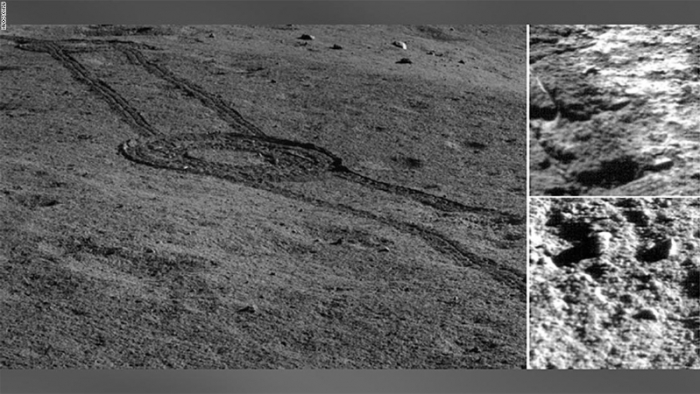For all of the jokes suggesting the moon is made of cheese, researchers have actually been trying to understand the composition of the lunar mantle, which exists between the crust and the core.
Impact craters are how researchers can learn more about the moon's evolution and how it formed. When asteroids and other objects collide with the moon, the crust is cracked and pieces of the mantle reach the surface. So the Yutu-2 rover went looking for some of those pieces. The study detailing its findings was published Wednesday in the journal Nature.
During the 1970s, some astronomers suggested that a magma ocean covered the moon's surface early in its history. Magma is the molten material that forms rocks. As it cooled, minerals floated to the top, and heavier elements sank. The top formed a basalt crust over a mantle of minerals. They believed that some of those minerals could be olivine and pyroxene, which are found in asteroids and Earth's upper mantle.
And learning more about how the moon evolved could shed light on Earth's evolution, as well. Compared with Earth, the moon's surface is relatively untouched, the researchers said.
"Understanding the composition of the lunar mantel is critical for testing whether a magma ocean ever existed, as postulated," said Li Chunlai, study author and professor of the National Astronomical Observatories of Chinese Academy of Sciences, said in a statement. "It also helps advance our understanding of the thermal and magmatic evolution of the moon."
Chang'e-4 landed in the Von Karman crater on January 3. Then, it deployed Yutu-2. The rover's purpose was to explore the South Pole-Aitken basin, the oldest and largest crater on the far side of the moon, which is 1,553 miles across.
Data samples collected by the rover on the basin floor indicated traces of olivine. Samples from deeper impacts within the basin revealed more olivine. Because basalt contains both, researchers theorized that the mantle could contain olivine and pyroxene equally, rather than being dominated by one.
The rover will need to explore more of its landing site to understand the mantle's composition, but the first mission to the far side of the moon is already gathering crucial data.
Next, Yutu-2 will sample more material from the floor of the crater to determine its origin, and researchers are looking at the possibility of returning samples to Earth.
















































